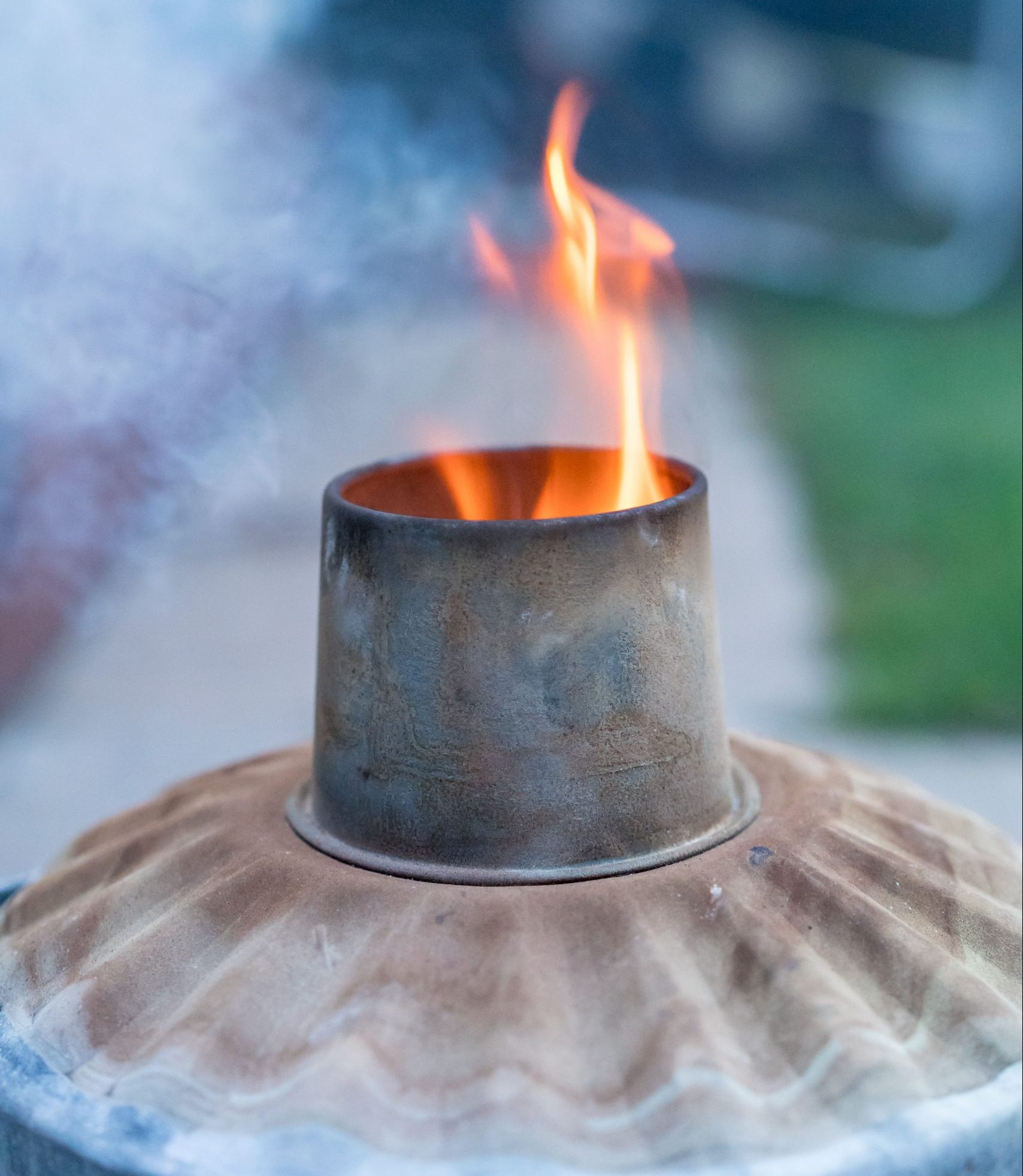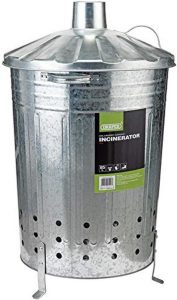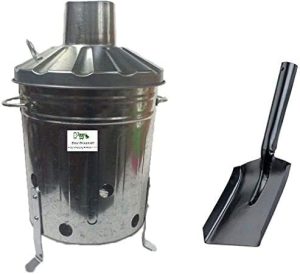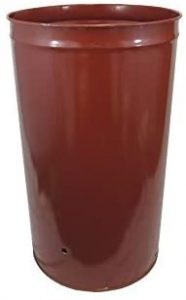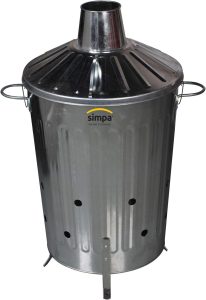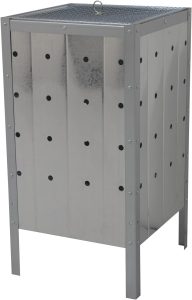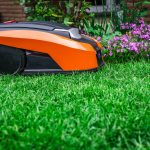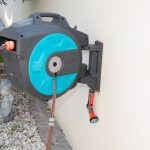After gardening, you’re likely going to be left with some garden waste you want to get rid of – whether it be leaves, trimmings, sticks, or other organic matter.
You can use a garden incinerator to burn your green waste safely, without leaving a mess of ash in your garden.
In this guide, we’ve looked at five of the best garden incinerators on the market in the UK right now.
Quick comparison table
Best garden incinerators

Let’s begin our reviews.
Below, we’ve looked at five of the best incinerators for your garden you can buy right now.
1. Draper GFI Garden Incinerator (85L)
If you’ve got a medium-sized garden and need to burn a medium-sized amount of waste, an 85 litre garden incinerator like this one is a good choice.
Draper’s incinerator has a slightly thicker drum than many other incinerators, making it a bit more sturdy, which is great. Its legs are also fairly strong, despite their size – this incinerator won’t fall over when placed on even ground.
The durable galvanised steel used on this garden incinerator is also quite good quality – it won’t warp or bend easily, even when faced with very high temperatures, in part because of its thickness. It will lose its shine though after a few uses.
Putting this bin together is a very easy process, as long as you can work a screwdriver. The included instructions are easy enough to follow.
This isn’t the cheapest garden incinerator bin on the market. But given how well made it is, and the quality materials used, it’s worth paying a bit extra for.
2. Simpa Mini Garden Incinerator (15L)
This is just about the smallest garden incinerator bin you can buy right now. If you have a small garden, this incinerator is perfect for burning small amounts of garden waste without creating a fire risk.
Due to its size, this incinerator is very cheap – about a third of the price of some 90L capacity incinerator bins. But is it good value for money?
The galvanised steel used on the barrel is a bit thin when compared to other incinerators. However, it does its job well – the drum is very heat resistant – you just want to make sure you don’t knock it over onto a hard surface when not in use, otherwise it might leave a dent.
You also get an ash shovel included from Simpa, which is a nice touch. The chimney, which is quite large in proportion to the lid, does a good job at helping to keep the fire going.
Just remember, this is not a large incinerator – it’s about the size of a large bucket, or a medium-sized plant pot. It won’t help you to burn large branches or sticks, but does a great job with burning paper, cardboard, leaves, and grass or hedge trimmings.
3. Keto Plastics Extra Large Garden Incinerator (210L)
On the opposite end of the spectrum, if you have a large garden and need to quickly burn a lot of garden waste and organic matter, this incinerator from Keto Plastics is just about the biggest incinerator you can buy.
Because it has a capacity of 210 litres, it’s actually quite hard to fill this burning bin, even if you have a large garden. You’d need to have a massive amount of garden waste to dispose of in order to fill this incinerator.
Unlike the other options we’ve looked at, this incinerator does not come with a chimney in its lid. As anincinerator for larger gardens, it’s designed to burn big branches, and large off-cuts of hedges, without you having to trim them down to size first. The lack of a lid makes it easier to have a fire going with branches coming above the rim of the drum, without affecting how well your garden debris burns.
Given its size (this incinerator is nearly a metre tall), the price is actually quite reasonable. As long as your garden is big enough to accommodate this fire bin safely, this bin can be very helpful for the efficient combustion of large amounts of garden waste.
The one issue with this incinerator is its air flow. There is no hole underneath, and no three-legged base like on most other incinerators. Therefore, to improve ventilation, you might need to drill more holes than what the incinerator comes with.
4. Simpa Garden Incinerator (60L)
Looking for a mid-sized garden incinerator bin?
If you don’t quite need 90 litres of capacity, but a <25L burning bin would be way too small, this incinerator is worth looking at. It’s small enough to be easily portable, but large enough to handle a decent amount of garden waste – the 60 litre capacity strikes a nice balance.
The incinerator is made from durable galvanised steel, which is what you want. As a result, this fire bin is very heat and rust-resistant, although it will lose its colour after a couple of uses.
You also get a sturdy three-legged base, which doesn’t look amazingly strong, but actually provides great stability. Just ensure that you place this fire bin on flat ground.
Also, unlike some other incinerators, this option is quite easy to assemble – the instructions are easy to follow, mostly because all you need to do is screw in the legs.
5. Woodside Garden Incinerator (100L)
Unlike the other incinerators we’ve looked at, this garden waste incinerator is square-shaped, rather than cylindrical.
As a result, it has four legs, rather than three, like most other incinerators have. However, a bit more of an assembly effort is required, since there are a lot of screws to install.
One of the other benefits of this design is it can make storage a bit easier. The sides are exactly 40cm wide, so you might have a nice spot in the shed or corner of your garden for this incinerator bin. Unlike a cylindrical bin, it won’t leave any space wasted in storage.
The price is also quite reasonable, given it can handle up to 100 litres of garden waste. And the ventilation holes do a good job of keeping the fire going until all the waste is gone.
However, despite having four legs, this incinerator is slightly flimsy. It’s made from galvanised steel, which is great, but it’s not the thickest material. They can also be a bit sharp, so it’s important to be careful when putting the incinerator together.
How to choose a garden incinerator
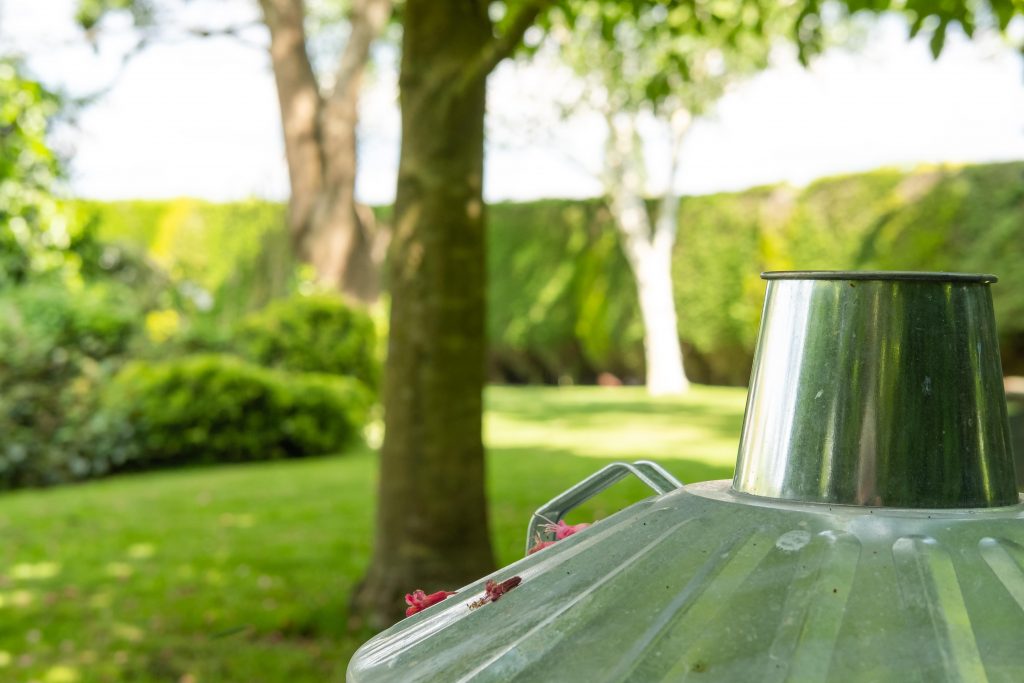
In this part of our buyer’s guide, we’ll explain what you need to know when choosing an incinerator bin for your garden waste.
How do garden incinerators work?
Garden incinerators, also known as fire bins, look a bit like a regular dustbin. However, they often come with a chimney lid, and have air holes around the sides, as well as a ventilation hole (or a number of small holes) at the bottom.
You place your dry garden rubbish and waste into the incinerator, trying to layer the material to ensure it all catches alight. It’s a good idea to place kindling such as scrunched up newspaper or small cardboard pieces at the bottom, followed by grass clippings, and then some larger sticks or branches on the top.
Then, you set the material on fire through one of the ventilation holes in the base, using a long match or a barbeque lighter. Once the fire is going, you can add more garden waste, including slightly wet garden waste or green material, although you also want to try and avoid squashing everything down too much.
Eventually, your garden waste is incinerated, eventually leaving behind a nice amount of ash you can use on your garden, once it’s cooled down.
What size incinerator should I get?
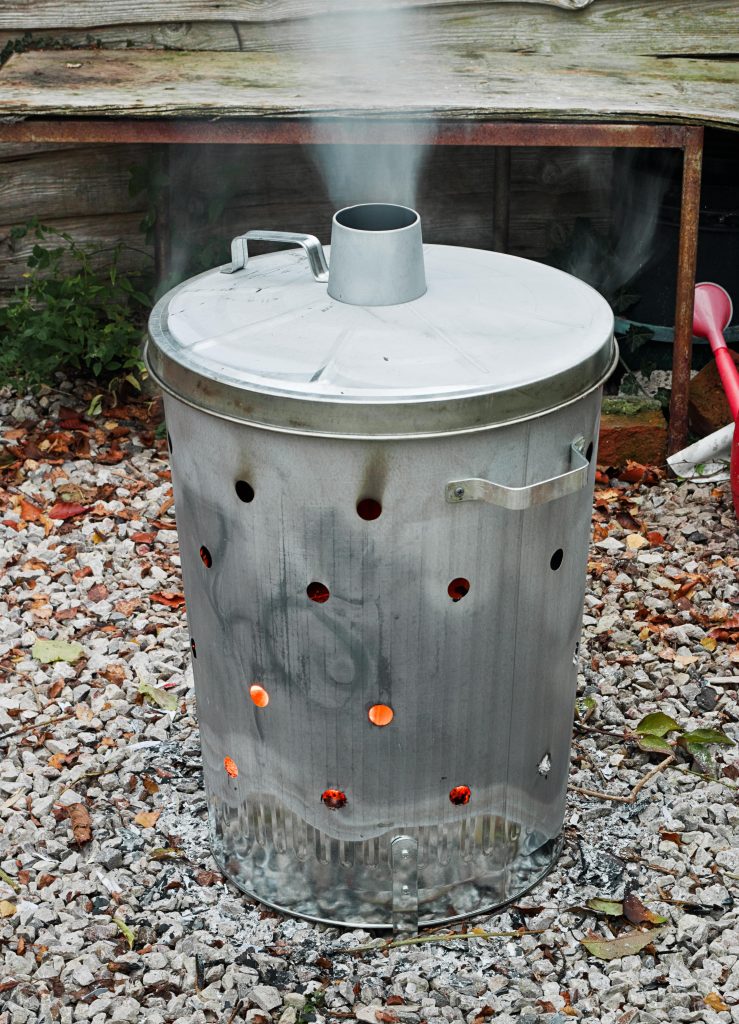
Garden incinerators come in a range of sizes. The most common size of a burning bin is 90 litres – about the size of a typical dustbin.
However, it’s important to ensure that you get the right size fire bin. If it’s too big, this may be a safety risk – you want to ensure that there is plenty of clear space around the garden incinerator, to reduce fire risk. If it’s too small, then you won’t be able to burn your garden waste very quickly.
- For very small gardens, it’s best to get a mini garden incinerator, with a capacity of about 15-25L. However, this size of garden incinerator bin is only good enough for very small amounts of garden waste.
- For medium gardens, a 60 litre or 90 litre garden incinerator should offer plenty of capacity for your garden waste.
- For large gardens, you can get 200L or 210L incinerators, which are great for burning a large amount of waste. If you need even more capacity, it’s probably worth buying two of these types of incinerators, because it gets a bit troublesome to deal with incinerators larger than this.
What garden incinerator material to look for
When shopping for a garden incinerator, you want to find one that’s made of galvanised steel – including the legs, drum, and lid.
This material won’t melt or warp when faced with extreme heat. It’s also very rust and corrosion-resistant, meaning you can keep your fire bin outside all year.
Square vs circular incinerators
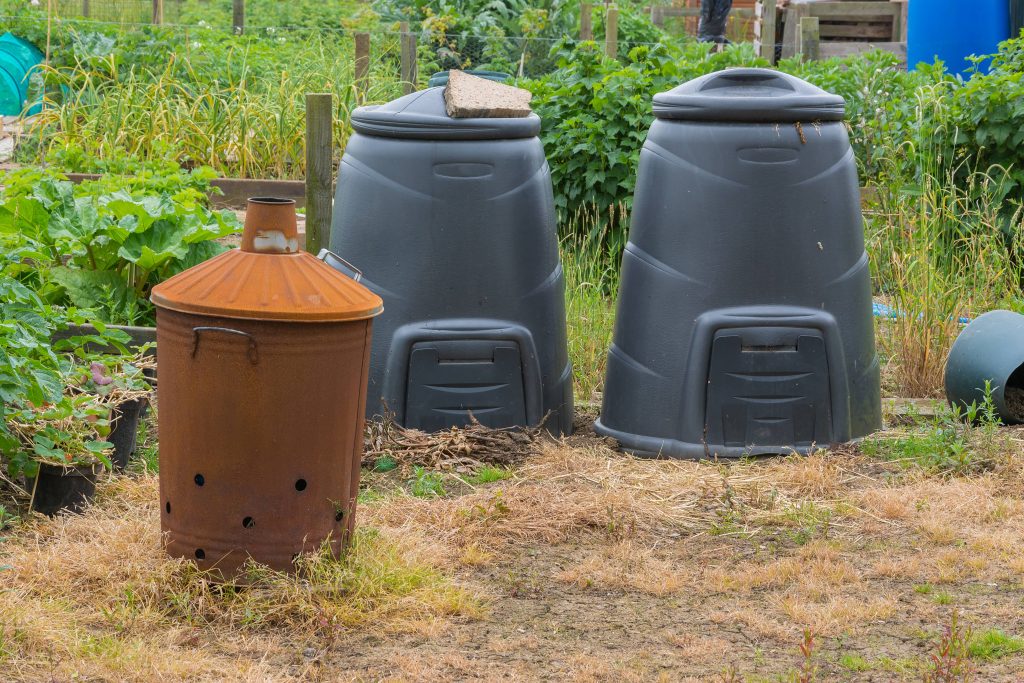
From browsing online, you might notice that the majority of outdoor incinerators are circular, like a dustbin, rather than square shaped. However, there are one or two square incinerators on the market.
The benefits of a cylindrical incinerator bin include:
- Better heat transfer – since there are no corners, there are fewer places for heat to concentrate or become trapped, making for more even heat distribution around the bin.
- Better durability – since there are fewer joints, the bin itself (but not necessarily the legs) is likely to be slightly more durable.
The benefits of a square incinerator bin include:
- It’s slightly easier to empty the bin with a square shovel, since you can push it into the corners more easily.
- The bin may be slightly more stable, because it has a bigger footprint, assuming the legs are strong and the bin is not flimsy.
On the whole, sticking to traditional circular drum-shaped fire bins is a sound choice. If you specifically seek out a square option, it might be hard to find a good one, since there are so few incinerators with this design on the market.
Other important garden incinerator features
There are a number of things to look out for when buying a fire bin for your garden.
- If you have one large hole at the bottom of the garden incinerator, rather than a number of small ventilation holes, the garden incinerator may have an inner flue, made out of mesh or with two thin strips of metal rising up and folded across each other at right angles. This helps to prevent the hole from becoming clogged up, stopping the ventilation hole from taking in air, and putting out the fire. Therefore, if your incinerator has one air hole at the bottom, an inner flue can be nice to have.
- A locking lid, for safety.
- Clear instructions, making it easier to set up the incinerator bin and begin using it.
- Heatproof gloves included, so that you don’t have to buy barbeque gloves separately.
- A small shovel included, to help with ash removal.
- Strong side handles, making the fire bin easy to be relocated when cold.
Are garden incinerators legal?
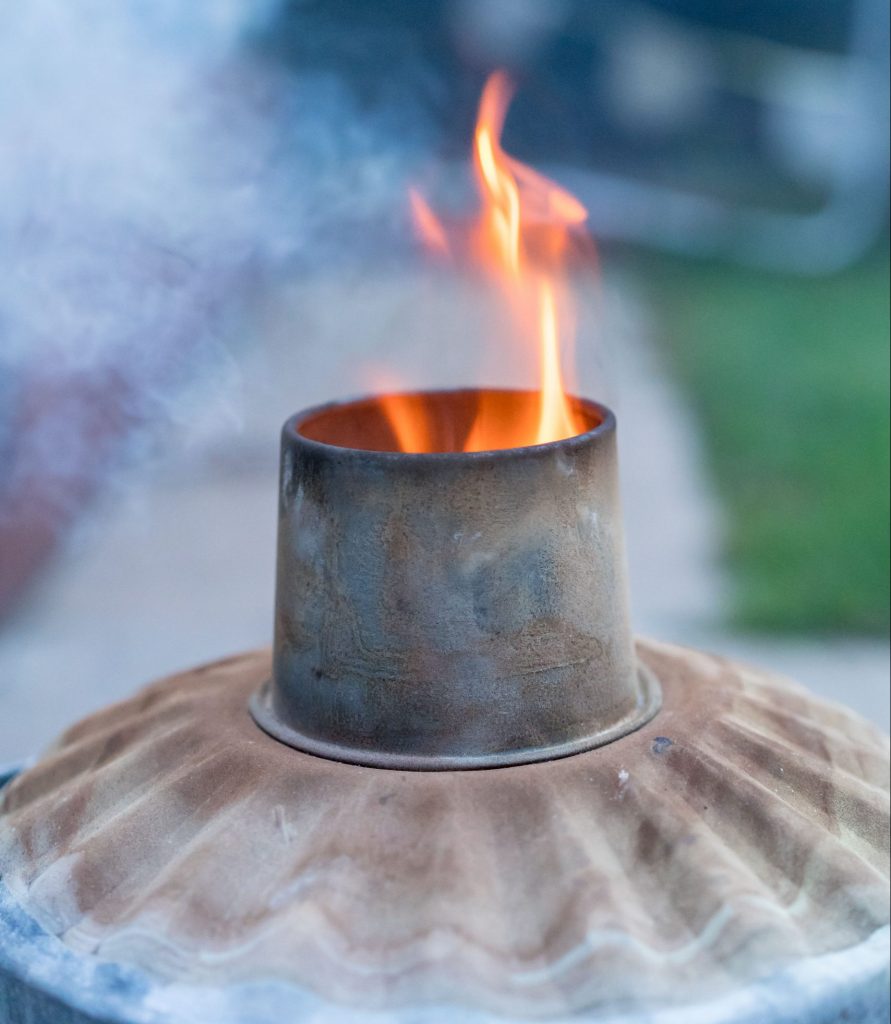
Garden incinerators are legal in the UK. You are allowed to burn garden waste, within reason, although certain councils will provide specific guidance on bonfires and other garden fires.
When burning green waste, you are still liable for the effects of smoke from your fire bin. For example, your neighbours can complain to the council if the smoke or smell impacts them. You can’t let smoke travel across a road and cause a traffic issue, as another example.
https://www.gov.uk/garden-bonfires-rules
Garden incinerator safety
There are a number of things to look for to ensure that you buy a safe incinerator:
- A strong, sturdy base. Most garden incinerators come with three legs, which may not seem like many. However, as long as the legs are made of strong steel, and are fastened securely, you won’t have to worry about the incinerator falling over, provided you place it on a flat surface.
- A locking chimney lid. The ensures that the lid does not move while the fire is going, and also reduces the likelihood of embers escaping the drum.
You should also consider taking the following safety measures when using your incinerator:
- Always use proper barbeque gloves when you use a garden incinerator, including when touching its lid. The fire bin will become extremely hot when a fire is lit. Don’t use oven mitts – you need gloves that give you the full freedom of movement necessary to move your hands.
- Don’t leave the incinerator unattended while in use.
- Ensure that children cannot go near the fire bin – if they touch it while the incinerator is in use, they will get burnt.
- Be careful to check the wind direction, and ensure that the smoke from your burning materials such as garden waste is not blowing towards other people in the immediate vicinity. Don’t use the incinerator bin during high winds.
- Have a plan in mind about how you will put the fire out at short notice if need be. You might like to keep a bucket of water on hand.
- Before handling the ashes, wait at least 6 hours until after the fire has gone out, and ideally wait overnight. Large amounts of ash can remain extremely hot on the inside, long after the fire has died out.
Bonfires vs garden incinerators
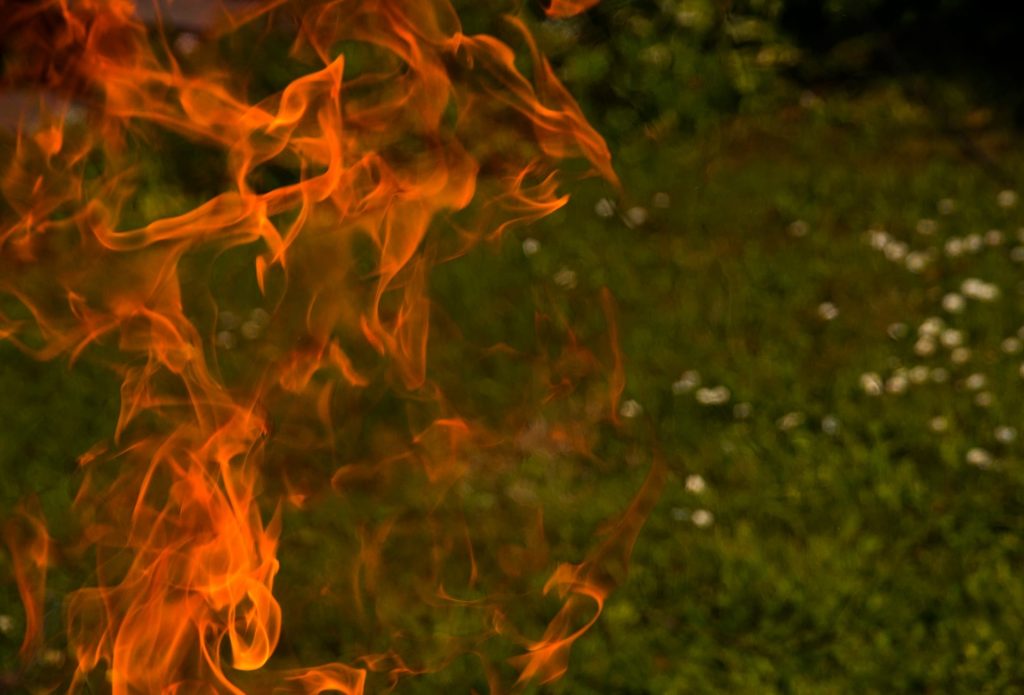
To create a garden fire and burn waste from your lawn, trees, and hedges, you might also be considering using a bonfire, rather than a galvanised steel garden incinerator bin.
There are a number of benefits to investing in a garden incinerator bin:
- They’re safer, prevent embers from spreading, and make it easier to control the fire.
- They collect the ash for you, rather than leaving a mess on your lawn or patio.
- They can help to stop smoke blowing everywhere, if you buy an incinerator with a chimney in its lid.
The downside to incinerators is you have to cut down branches to fit inside them. However, if this is a problem, you can get extra large incinerators, for more quick and efficient burning.
Conclusion
You’ve reached the end of our garden incinerator buyer’s guide.
Remember, when choosing an incinerator, safety should be your number one priority. Ensure to get a fire bin that is stable, and isn’t too big for your garden. Also, having a locking lid helps ensure that the top of the incinerator stays in place.
If you have any questions about choosing the best garden incinerator for your garden, feel free to leave a comment below and we’ll get right back to you.

I’m Josh, and I’m the head writer at Lawn Care Pro.
I love everything lawns, but I’m a bit of a lawn mower nerd. I spend a lot of my free time tinkering with mowers, and planning my mowing schedule for the next few weeks.
I’m also into cars, which comes in very helpful when servicing a mower engine!

